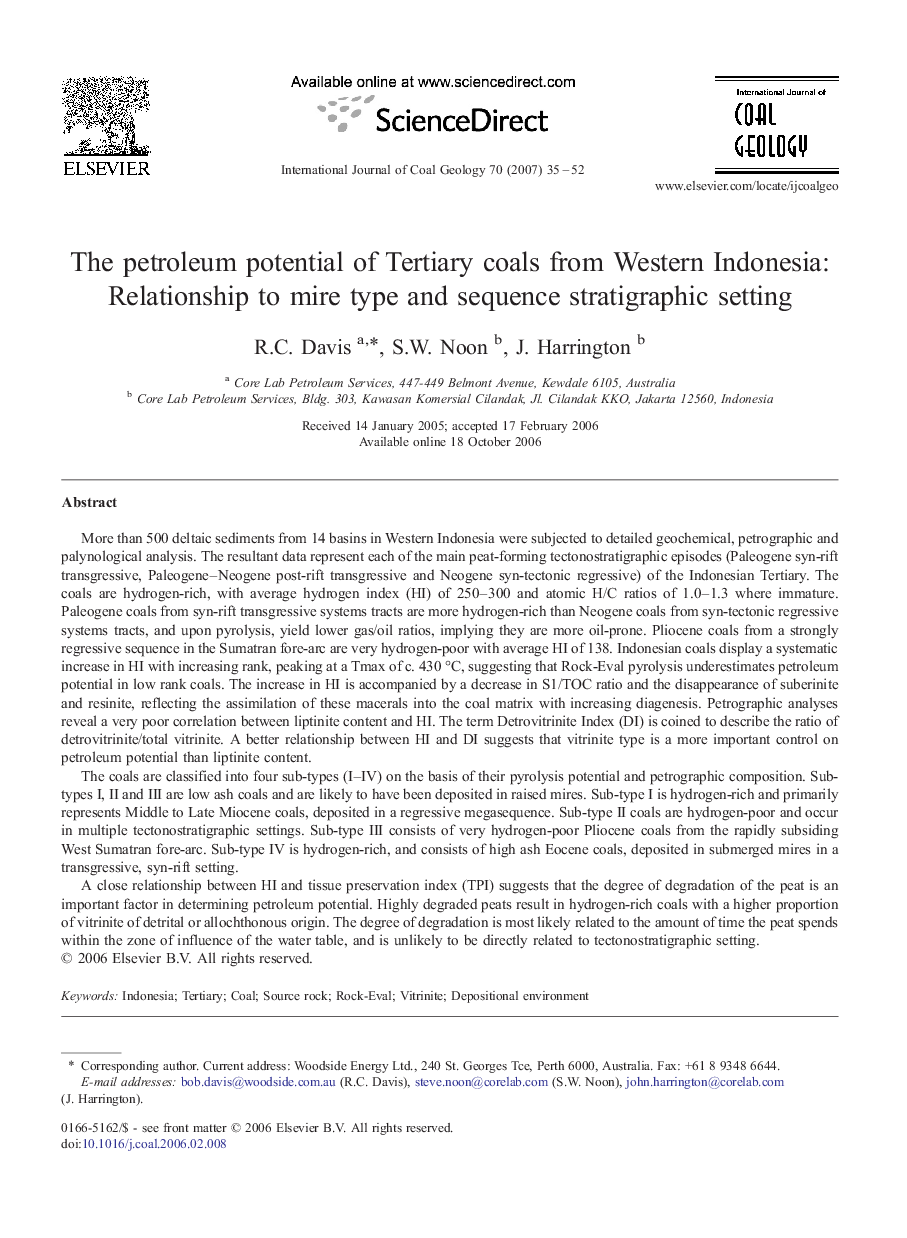| کد مقاله | کد نشریه | سال انتشار | مقاله انگلیسی | نسخه تمام متن |
|---|---|---|---|---|
| 1754260 | 1522660 | 2007 | 18 صفحه PDF | دانلود رایگان |

More than 500 deltaic sediments from 14 basins in Western Indonesia were subjected to detailed geochemical, petrographic and palynological analysis. The resultant data represent each of the main peat-forming tectonostratigraphic episodes (Paleogene syn-rift transgressive, Paleogene–Neogene post-rift transgressive and Neogene syn-tectonic regressive) of the Indonesian Tertiary. The coals are hydrogen-rich, with average hydrogen index (HI) of 250–300 and atomic H/C ratios of 1.0–1.3 where immature. Paleogene coals from syn-rift transgressive systems tracts are more hydrogen-rich than Neogene coals from syn-tectonic regressive systems tracts, and upon pyrolysis, yield lower gas/oil ratios, implying they are more oil-prone. Pliocene coals from a strongly regressive sequence in the Sumatran fore-arc are very hydrogen-poor with average HI of 138. Indonesian coals display a systematic increase in HI with increasing rank, peaking at a Tmax of c. 430 °C, suggesting that Rock-Eval pyrolysis underestimates petroleum potential in low rank coals. The increase in HI is accompanied by a decrease in S1/TOC ratio and the disappearance of suberinite and resinite, reflecting the assimilation of these macerals into the coal matrix with increasing diagenesis. Petrographic analyses reveal a very poor correlation between liptinite content and HI. The term Detrovitrinite Index (DI) is coined to describe the ratio of detrovitrinite/total vitrinite. A better relationship between HI and DI suggests that vitrinite type is a more important control on petroleum potential than liptinite content.The coals are classified into four sub-types (I–IV) on the basis of their pyrolysis potential and petrographic composition. Sub-types I, II and III are low ash coals and are likely to have been deposited in raised mires. Sub-type I is hydrogen-rich and primarily represents Middle to Late Miocene coals, deposited in a regressive megasequence. Sub-type II coals are hydrogen-poor and occur in multiple tectonostratigraphic settings. Sub-type III consists of very hydrogen-poor Pliocene coals from the rapidly subsiding West Sumatran fore-arc. Sub-type IV is hydrogen-rich, and consists of high ash Eocene coals, deposited in submerged mires in a transgressive, syn-rift setting.A close relationship between HI and tissue preservation index (TPI) suggests that the degree of degradation of the peat is an important factor in determining petroleum potential. Highly degraded peats result in hydrogen-rich coals with a higher proportion of vitrinite of detrital or allochthonous origin. The degree of degradation is most likely related to the amount of time the peat spends within the zone of influence of the water table, and is unlikely to be directly related to tectonostratigraphic setting.
Journal: International Journal of Coal Geology - Volume 70, Issues 1–3, 2 April 2007, Pages 35–52